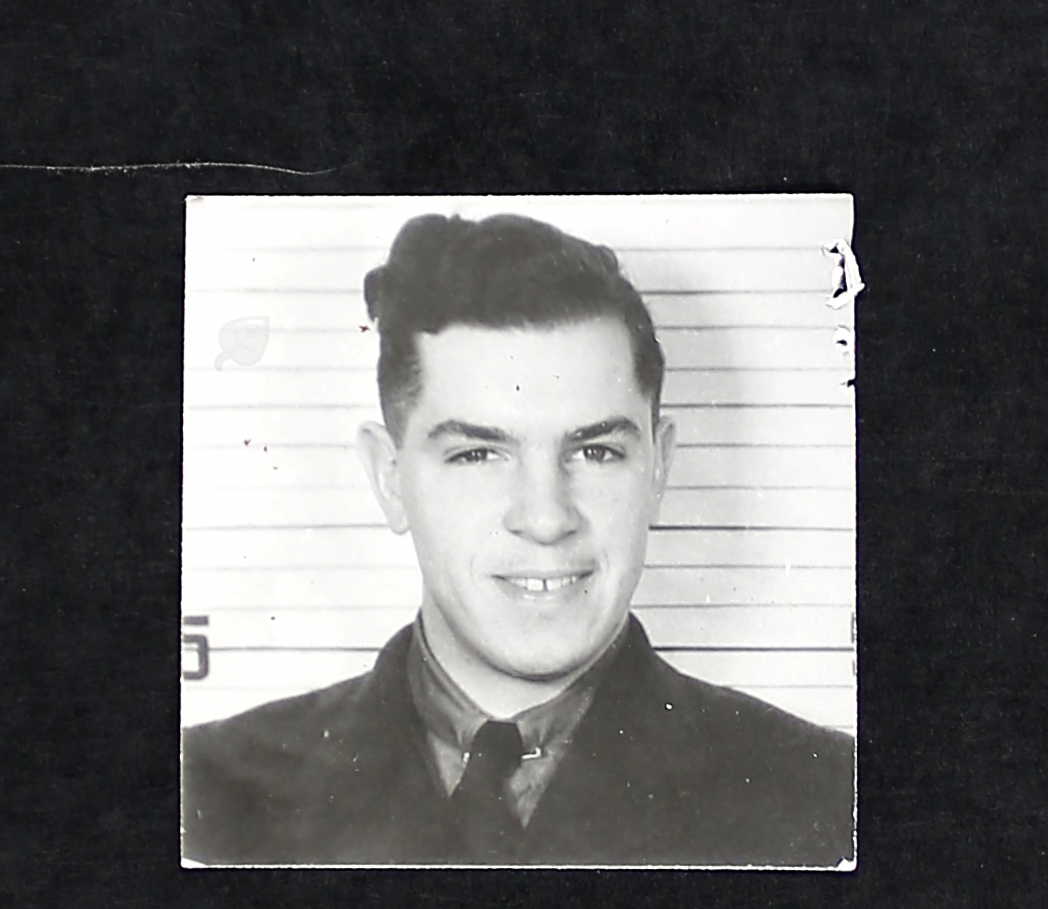
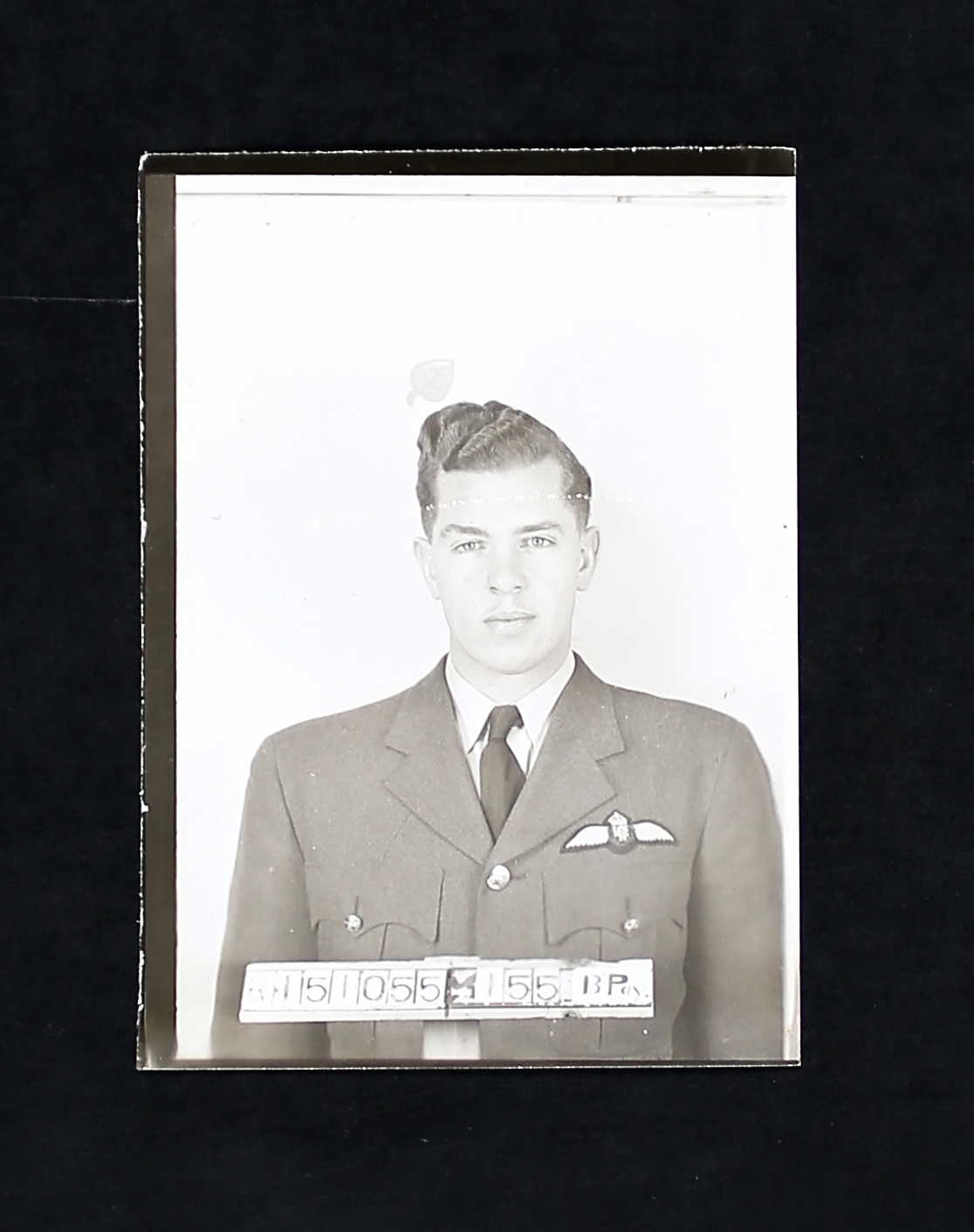
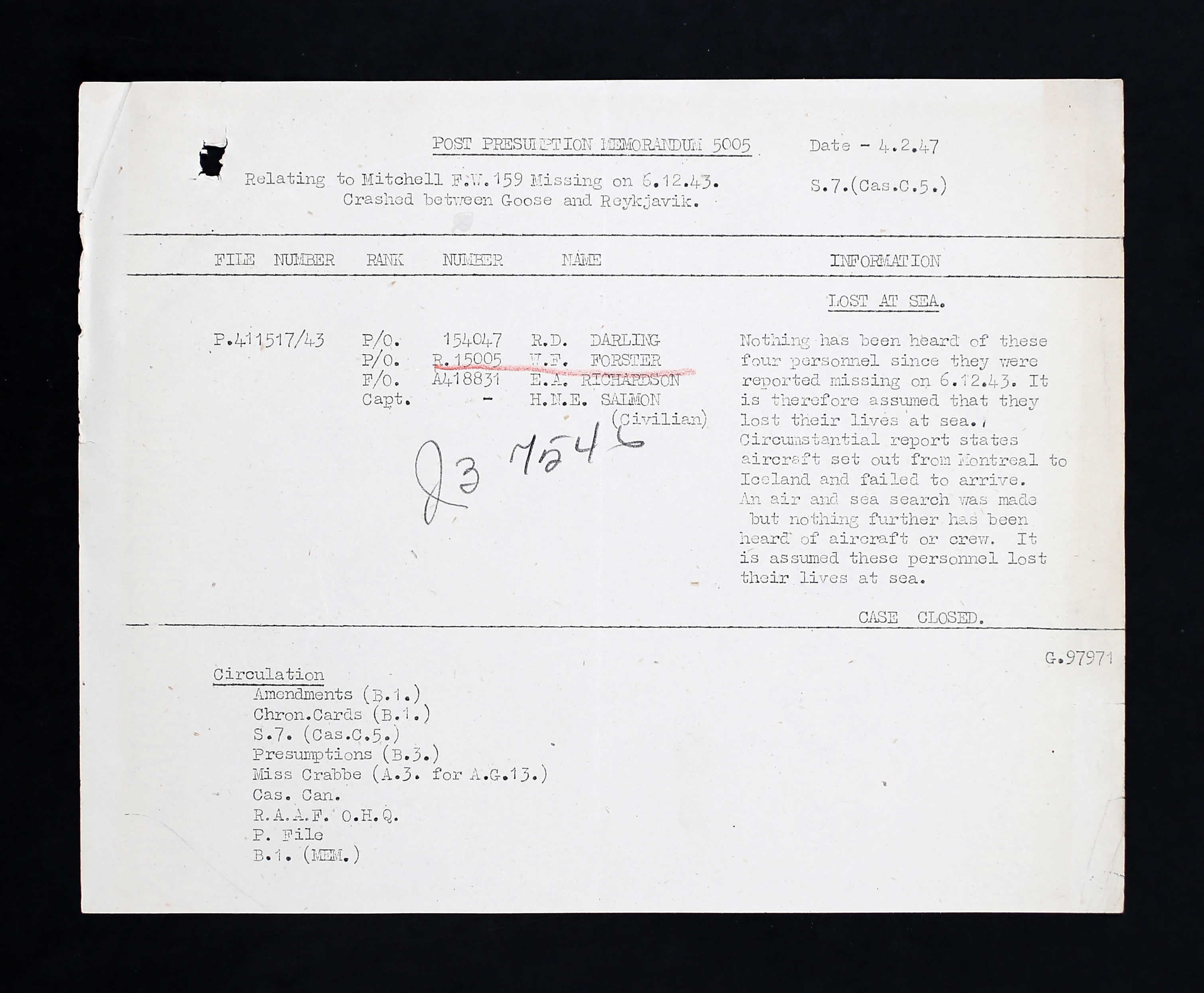
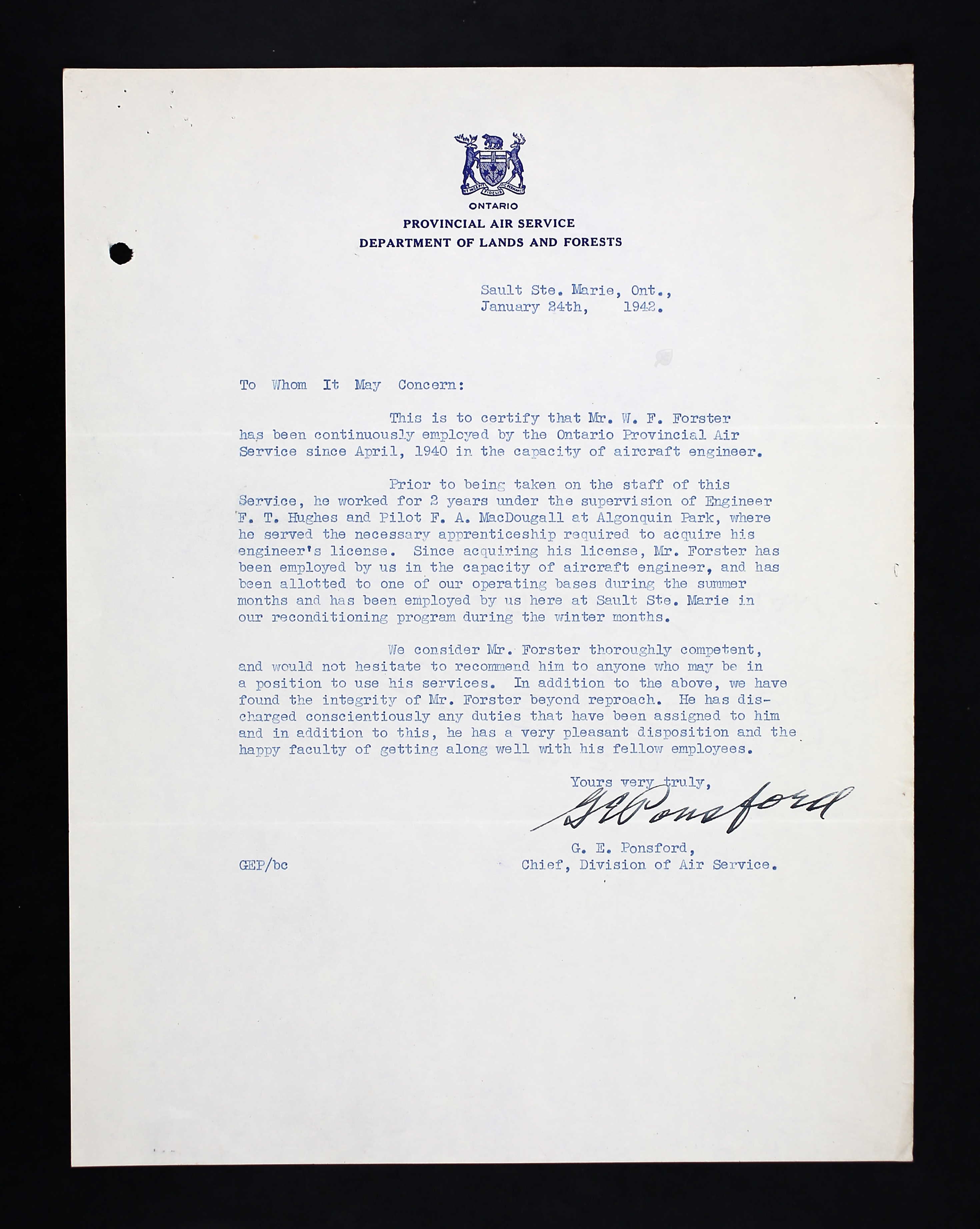
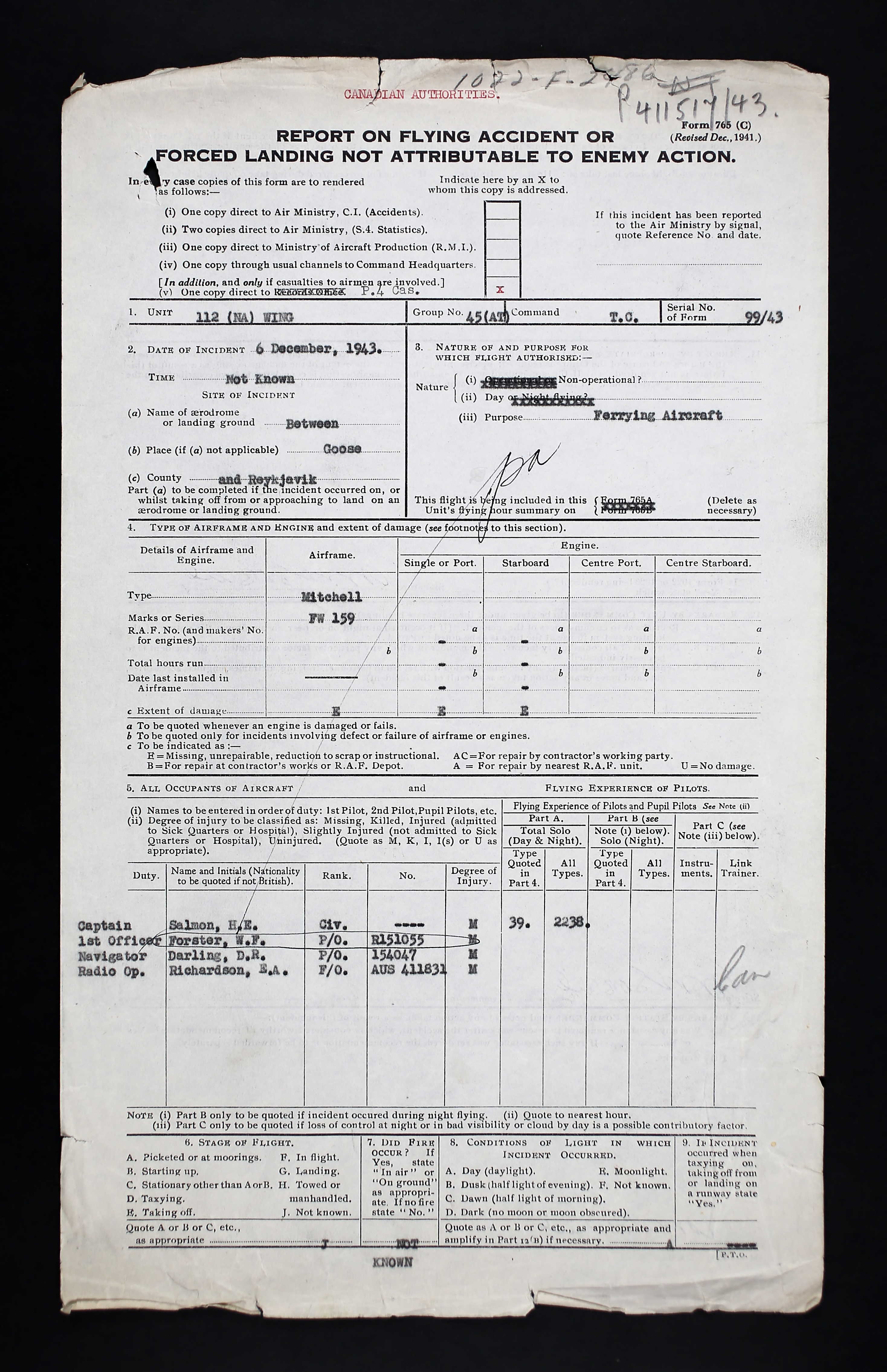
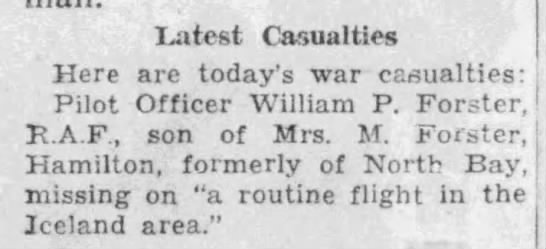
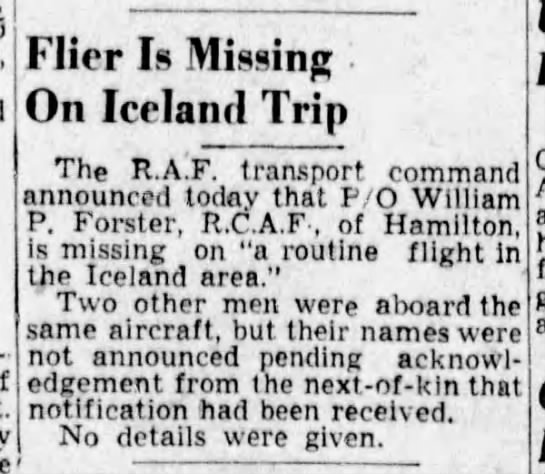
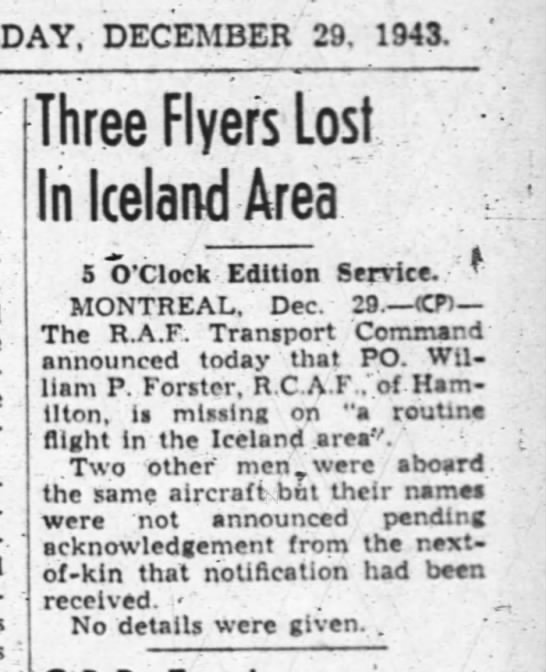
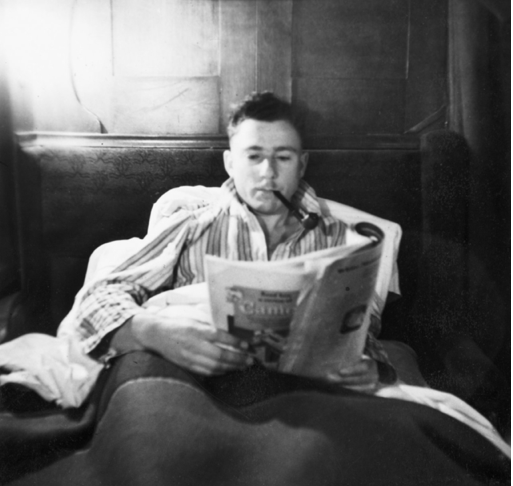
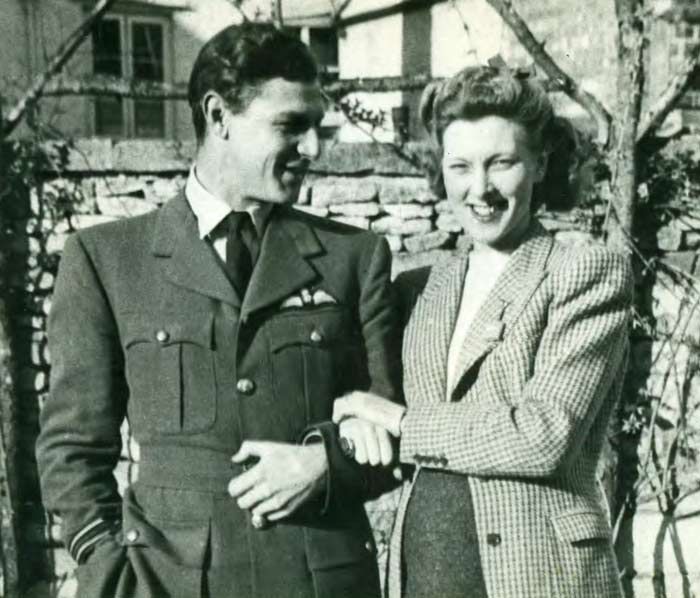
October 19, 1920 - December 6, 1943










William Frederick Forster, born in North Bay, Ontario, was the son of Bertrand George Forster, labourer, and Mina (nee George) Forster of Hamilton, Ontario. He had one brother, Frank, who lived in Toronto. Their parents were separated, and it was noted their father was killed in an accident at the age of 66. The family was Anglican.
He enlisted at Sault Ste Marie on March 16, 1942, where he had been living for three years. He was working first as a machinist, then as an air engineer for the Department of Lands and Forests (Provincial Air Service) for four years prior to becoming an AEM with the RCAF. “Servicing and overhauling engines and aircraft. Good knowledge of motors.” After the war, his mother indicated he had planned to reside in Hamilton, Ontario, with her.
William listed no hobbies but played baseball and hockey moderately. He did not smoke and drank the occasional beer. His physique was athletic, standing 5’8 ½” tall and weighing 157 pounds. William had blue eyes and brown hair. He had one - $50 Victory Loan Bond and life insurance policies.
He started his journey through the BCATP at No. 1 Manning Depot, Toronto, Ontario on March 16, 1942 until he was at Mount View, Ontario May 15, 1942. William wanted to remuster. June 26-27, 1942, he was AWL forfeiting two days’ pay.
October 9, 1942: “Good candidate with some experience as pilot.” He was sent to No. 23 PAED, University of Toronto March 7, 1943, taken on strength at No. 1 ITS, Toronto. He was 18th out of 66 in his class with 82%. “This airman is inclined to be reticent, but has shown good initiative and determination to make good.” October 14, 1942: “Good type. Steady, confident, and assertive. Smart appearance. Ambitious and aggressive sort. Should prove good student and turn out well. Desirable aircrew material.”
At. No. 1 MSB: March 15, 1943: “Intelligence average. Reasonable alert but rather off-hand in manner. Personal history negative except for occasional sleepwalking in childhood. Motivation largely selfish; joined RCAF because he knew he would have to join something. Flying interest good; has had a little dual unofficially; has been airsick four times in about 400 hours of flying, always when it was very rough. Wants Pilot. Second choice: Flight engineer. So far is not interested in any other aircrew job. Prefers operations to ferrying or instructing.” From March 26-28, 1943, he was at the hospital.
He was then sent to No. 20 EFTS, Oshawa, Ontario, May 16 - July 10, 1943. He was 3rd out of 40 in his class with 85% in his finals. Flying results: he was 20th out of 40 with 66.2%. He was considered an average pilot. “A rather easy going student but interested in his work and well disciplined. Had good average ability for clear hood flying. Inclined to be careless with detail unless checked. Judgment in forced landing procedure was a little weak. Should look around more.”
From there, he was sent to No. 9 SFTS, July 12 to October 29, 1943. He earned 84.1% in Ground School and 72.6% in his flying tests. His character and leadership: 82.6%. He was moderately suitable for fighter type and general reconnaissance aircraft, definitely bomber type. “A high average pilot, recommended for a commission.”
William was posted to No. 45 Group, Dorval, Quebec, Air Transport. He was sending $20 home each month as partial support of his mother. His brother was also assisting in her care.
On December 6, 1943, while on a ferry flight, he and the crew aboard Mitchell FW159 were lost between Goose Bay, Labrador and Reykjavik, Iceland. CREW: P/O Robert Donnisthorpe Darling, RAF, 154047, Navigator; P/O W.F. Forster, RCAF, J37546, Second Pilot; F/O Eric Anthony Richardson, 418831, RAAF, Radio Operator, and Civilian pilot, Harold Nigel Egerton Salmon, Captain, from Britain.
The plane had been carrying 100 pounds of US Mail. Nothing was heard from the aircraft after take-off at 0756 hours. An air-sea search occurred, but no trace of the aircraft of crew found.
Mrs. Forster received a letter in late October 1955 informing her that since William had no known grave, his name would appear on the Ottawa Memorial.
LINKS: